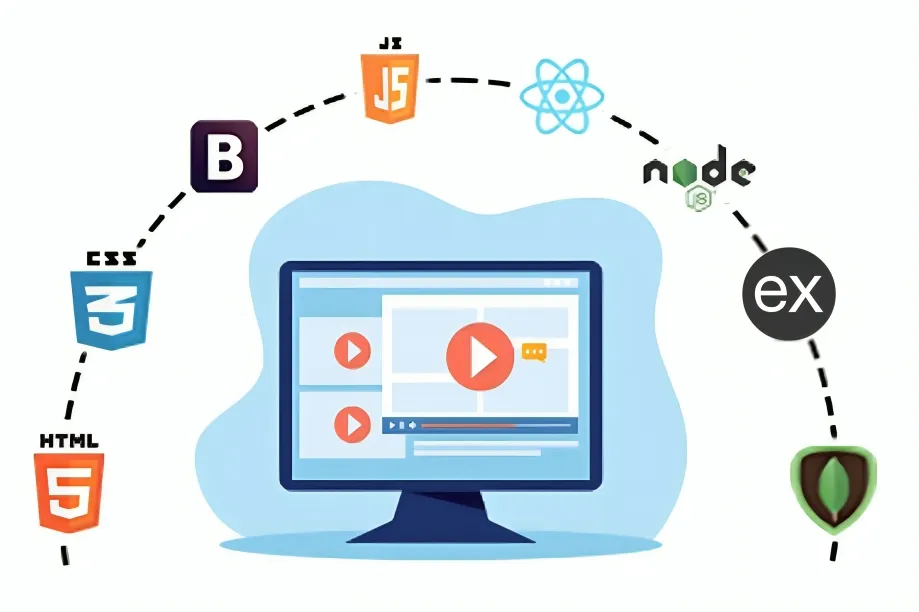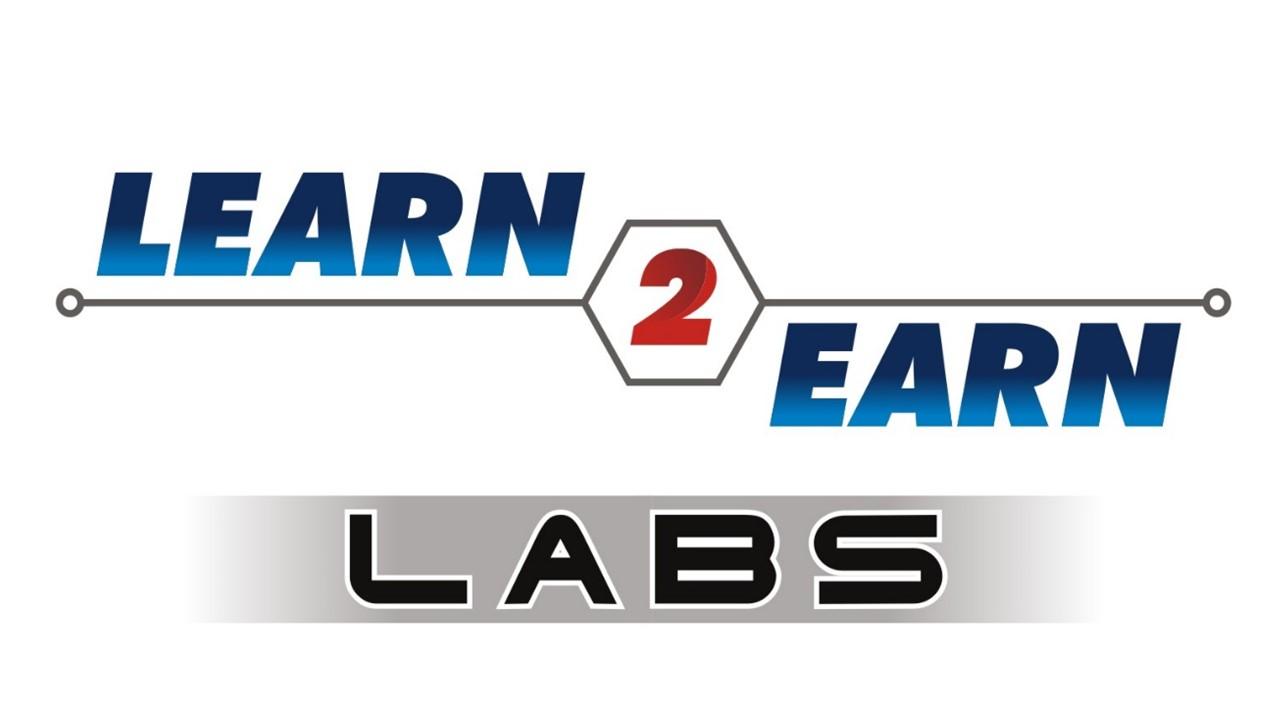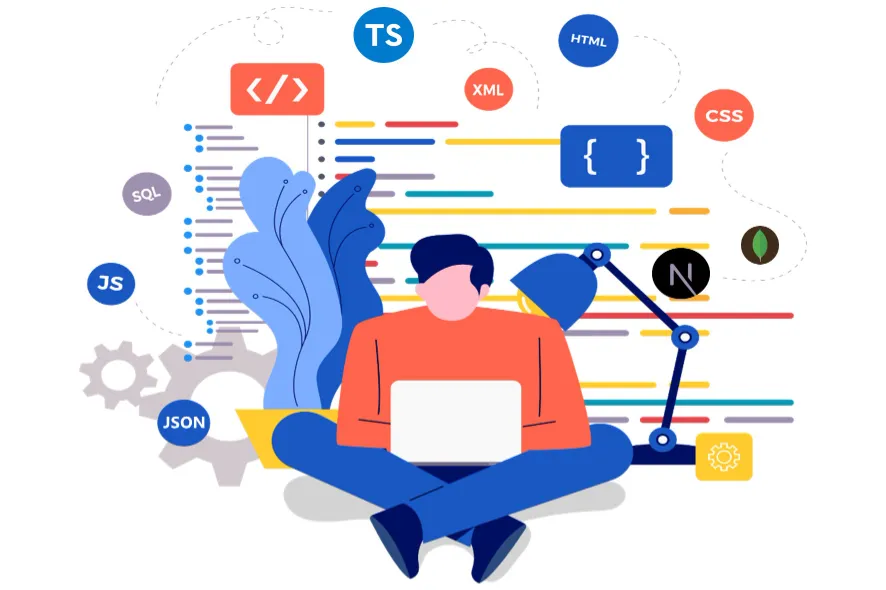
Master
Full Stack Software Development with MERN
With Project Experience
In the ever-evolving world of technology, the demand for skilled full stack developers has never been higher. Our Full Stack Web Development Training Program is your opportunity to master the art of building end-to-end applications and secure a future-proof career in the tech industry.
This Two-Years Intensive Program is meticulously designed to equip you with in-depth knowledge and hands-on experience in the most in-demand technologies. From creating visually stunning and user-friendly front-end interfaces to building powerful and scalable back-end systems, this program leaves no stone unturned in transforming you into a job-ready full stack developer.
About the Program
Our curriculum has been carefully crafted to ensure a balance between theoretical knowledge and real-world application. Over the course of two years, you will gain expertise in every aspect of full stack web development, including:
This program also incorporates lots of project work & practical assignments, ensuring you gain practical experience. By the end of the course, you will have built a robust portfolio that showcases your expertise and demonstrates your readiness for the professional world. Each module is tailored to industry standards, helping you meet the expectations of top employers worldwide.

Who is a Full Stack Developer?
A Full Stack Developer is a versatile professional who is skilled in both front-end (client-side) and back-end (server-side) development. They are capable of designing user-friendly interfaces, managing databases, handling server logic, and deploying applications to production environments. Simply put, they are the backbone of modern web development and one of the most sought-after roles in the tech industry.
The MERN Stack’s powerful combination of MongoDB, Express.js, React, and Node.js offers unmatched versatility, scalability, and efficiency, making it the perfect choice for mastering full stack web development. This comprehensive stack ensures you are well-prepared to tackle real-world challenges in building modern, dynamic, and high-performance web applications, meeting the demands of the ever-evolving tech industry.
Who Can Join
- Beginners: If you’re new to programming, this program will guide you step-by-step from basics to advanced concepts.
- Graduates and Students: Start your career with the skills that employers are actively seeking.
- Professionals: Transition into the role of a full stack developer or upskill to meet industry demands.
- Tech Enthusiasts: Anyone passionate about creating impactful web applications can join.

What makes this Program Unique?
- Comprehensive Curriculum: The program covers every essential technology and tool required for modern full stack development.
- Hands-On Projects: Work on real-world projects and assignments to apply your skills in practical scenarios.
- Work Experience: Based on your dedication, project submissions, and performance, you will earn verifiable work experience, setting you apart in the job market.
- Expert Mentors: Learn from industry experts who bring real-world experience and insights.
- Career Support: Receive guidance on building your portfolio, cracking interviews, and negotiating job offers.
As the demand for web applications continues to grow, so does the need for skilled full stack developers. By completing this program, you are not only preparing for today’s job market but also future-proofing your career for emerging trends in technology.
Advantages of the Program
- Future-Ready Skills: Learn cutting-edge technologies & Concepts like React, NextJS, NodeJS, ExpressJS, NestJS, and DevOps.
- High Earning Potential: Full stack developers are among the highest-paid professionals in the tech industry.
- Global Opportunities: With these skills, you can work remotely for top companies worldwide.
- Work Experience: Showcase real-world experience on your resume, making you job-ready from day one.
- Endless Career Paths: Whether it’s development, DevOps, or cloud engineering, this program opens multiple career avenues.
Career Options After Completion
After completing this program, you’ll be equipped to take on roles such as:
- Full Stack Developer
- Front-End Developer
- Back-End Developer
- Database Administrator
- Cloud & DevOps Engineer
- Software Engineer
- Technical Architect
With your newly acquired skills and real-world project experience, you’ll stand out as a top candidate for high-paying jobs. The demand for skilled full stack developers spans across industries such as technology, e-commerce, healthcare, and finance, providing you with diverse career opportunities. You’ll also have the foundation to grow into leadership roles like Team Lead or Technical Manager as you progress in your career.
How Much Dedication is Required?
This is not just a course—it’s a career transformation journey. Your success depends on your dedication and commitment to learning. By consistently participating in lectures, completing assignments, and working on real-world projects, you can:
- Build an impressive portfolio of projects.
- Earn verifiable work experience.
- Gain a competitive edge in the job market.
This journey requires focus, discipline, and a genuine passion for web development. Setting aside dedicated time for learning and staying curious will ensure you stay ahead. Every small effort you make today will contribute to your big success tomorrow. Consistency is key—small, consistent progress will always outweigh bursts of activity. Believe in your abilities and stay motivated throughout the program.

Work Experience to Boost Your Career
One of the standout features of this program is the opportunity to earn verifiable work experience. Your dedication to assignments, sincerity in project work, and commitment to learning will translate into real-world experience that:
- Enhances your resume.
- Increases your earning potential.
- Gives you an edge over other candidates in interviews.
This hands-on experience bridges the gap between theoretical knowledge and practical application, making you industry-ready from day one. It showcases your ability to handle real challenges and deliver impactful solutions. Employers value candidates with proven expertise, and this program ensures you have the credentials to back your skills. By the end of the program, you’ll confidently step into the professional world with work experience that speaks for itself.
Transform Your Career Today
This two-year training program isn’t just about learning technologies—it’s about unlocking your true potential and achieving career transformation. By the end of this journey, you will:
- Be proficient in building and deploying large-scale applications.
- Have a deep understanding of modern web development practices.
- Be ready to secure high-paying roles in the tech industry.
Don’t wait to build the career you’ve always dreamed of. Join us today and embark on a journey to become a professional full stack developer capable of shaping the future of technology.
Your Journey to Success Starts Here!
With our Full Stack Web Development Training Program, you have the tools, guidance, and opportunities to make your mark in the tech industry. The only limit is your dedication. Are you ready to transform your future? Let’s begin!
Training Mode
Online Live Classes are also available
- 4x more effective way of learning
- Hands-on experience with projects & assignments
- Virtual class with real interaction with trainer
- Monitoring support & troubleshooting issues
- Masterclass from industry experts & leaders
- Live class recordings for revision purposes
Full Stack Web Development using MERN Training Program in Agra
Learn2Earn Labs
F-4, First Floor, Anna Ikon Complex, In Front of Deviram Food Circle, Sikandra-Bodla Road, Sikandra, Agra, Uttar Pradesh – 282007
Call: +91-9548868337
Program Details
Feel free to call
Request More Information
Download Syllabus
Mentorship Support with Frontend Libraries & Frameworks
“Available only for those who perform well throughout the entire training program.”
- Svelte: A modern framework that shifts much of the work to compile time, offering faster runtime and better performance for building reactive interfaces.
- js: A framework for ambitious web applications, offering strong conventions and powerful tools for building scalable applications.
- Preact: A lightweight alternative to React with similar API, ideal for high-performance, lightweight applications.
- Fastify: A fast and low-overhead framework designed for high-performance applications.
- js: Created by the same team behind Express.js, Koa provides a more modern and modular approach to web application development.
- js: A full-stack framework for building web and mobile applications, featuring real-time updates and a seamless integration with MongoDB.
Popular Tools for Front-End and Back-End Development Using JavaScript
Front-End Development Tools
- Webpack: A module bundler for optimizing and managing front-end assets and dependencies.
- Vite: A fast build tool and development server optimized for modern web projects.
- Tailwind CSS: A utility-first CSS framework for creating customizable and responsive designs.
- Bootstrap: A popular CSS framework for quickly building responsive, mobile-first websites.
- Parcel: A zero-configuration build tool for front-end applications.
- Storybook: A UI development tool for creating, testing, and documenting components in isolation.
- Sass (Syntactically Awesome Stylesheets): A preprocessor for CSS that adds features like variables, nesting, and mixins, making it easier to write and maintain complex stylesheets.
- ESLint: A static code analysis tool for identifying and fixing problems in JavaScript code, helping to ensure code quality and consistency by enforcing coding standards.
Back-End Development Tools
- GraphQL: A query language and runtime for building APIs with flexible data-fetching capabilities.
- Apollo Server: A GraphQL server for building scalable APIs with tools for managing schema and queries.
- Mongoose: An ODM (Object Data Modeling) library for MongoDB and Node.js.
- Sequelize: A promise-based ORM (Object-Relational Mapper) for Node.js and SQL databases.
- PM2: A process manager for running and managing Node.js applications in production.
- Prisma: A modern database toolkit for working with SQL and NoSQL databases in JavaScript.
- JSON Web Token (JWT): A standard for securely transmitting information as a JSON object for authentication.
- Redis: An in-memory data store used for caching and session management in Node.js applications.
Apply Now
Please enter the following details to initiate your application for Digital Marketing training program offered by Learn2Earn Labs, Agra
Eligibility Crietaria
Any student/job seeker/working professional can join
Having interest in programming
Having basic knowledge of computer.



